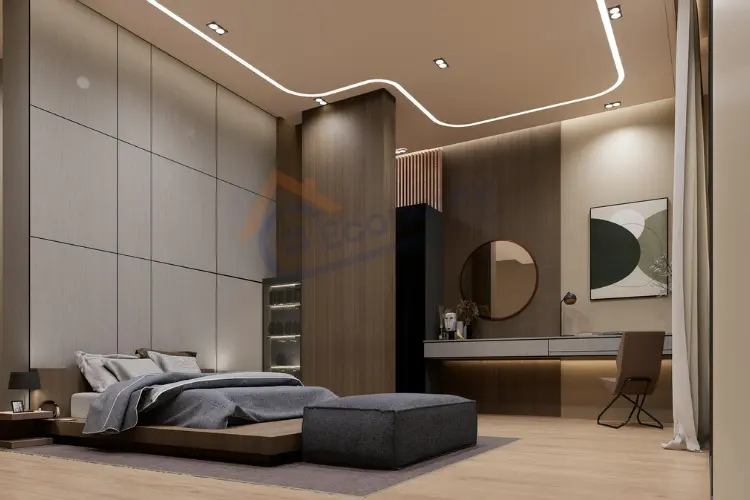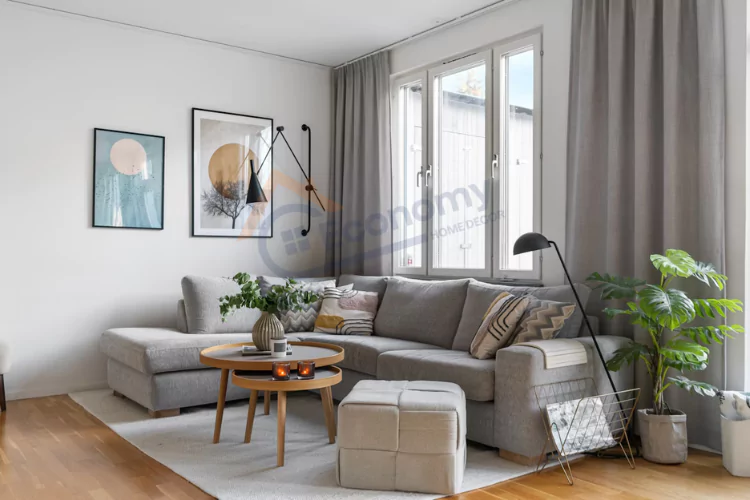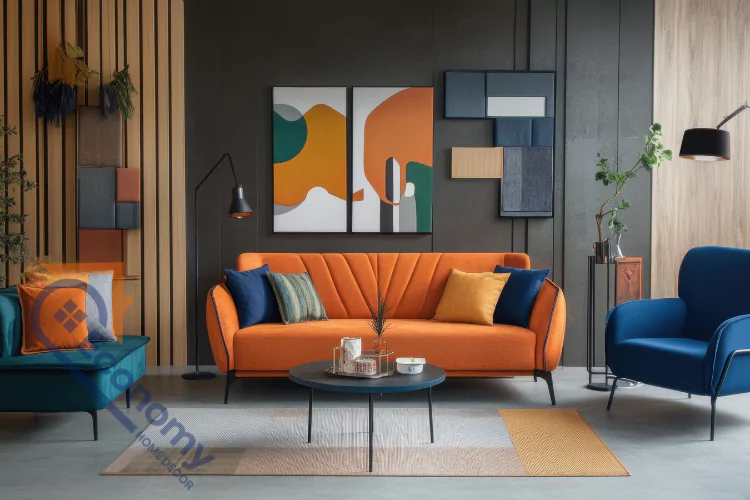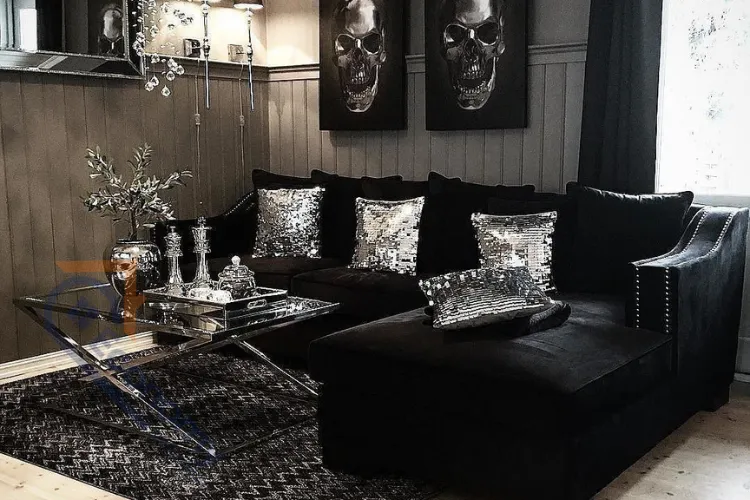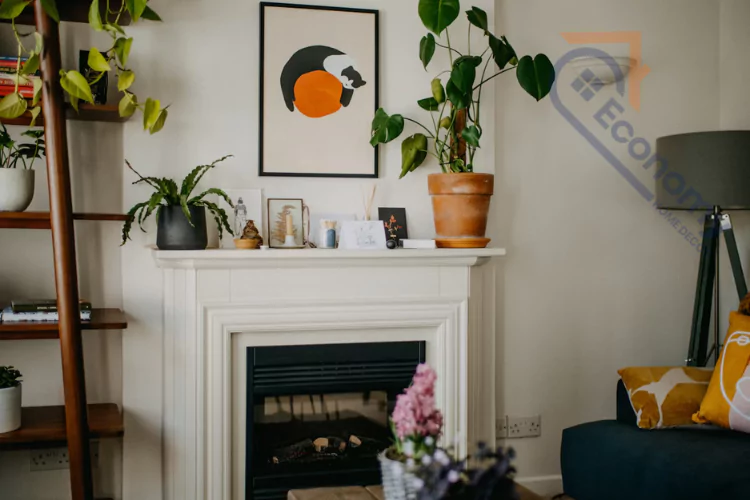Wood paneling has made a remarkable comeback in modern interior design, transforming from a dated 1970s trend into a sophisticated design element that adds warmth, texture, and character to any living space. Learning how to decorate a living room with wood paneling can help you create a cozy, inviting atmosphere while maintaining contemporary style. Whether you’re working with existing wood paneling or planning to install new panels, this comprehensive guide will provide you with practical tips, creative ideas, and expert advice to make your living room both beautiful and functional.
Different Types of Wood Paneling
When considering how to decorate a living room with wood paneling, it’s essential to understand the various types available and their unique characteristics. Traditional solid wood paneling offers durability and authentic beauty, featuring real wood species like oak, pine, cherry, or walnut. Each type brings its own grain patterns, color variations, and natural charm that can significantly impact your room’s overall aesthetic.
Engineered wood paneling provides a more budget-friendly option while still delivering the visual appeal of real wood. These panels often feature a wood veneer over a composite base, making them lighter and easier to install. Reclaimed wood paneling has gained popularity for its sustainable qualities and unique weathered appearance that tells a story through its natural imperfections and aged patina.
Modern alternatives include MDF (Medium Density Fiberboard) panels with wood-grain finishes, which offer consistent appearance and easy maintenance. These options work particularly well in contemporary settings where uniformity is desired. Consider factors like moisture resistance, installation complexity, and long-term maintenance when selecting the right type for your living room project.
Assessing Your Current Living Room Layout
Before diving into how to decorate a living room with wood paneling, take time to thoroughly evaluate your existing space. Measure room dimensions, noting ceiling height, window placement, and natural light sources. Wood paneling can make rooms feel smaller if not properly planned, so understanding your space’s proportions is crucial for successful implementation.
Consider your room’s architectural features, including built-in elements, fireplaces, or structural columns that might influence paneling placement. Traffic flow patterns should also guide your decisions about where to install paneling and how it might affect furniture arrangement. Document any existing electrical outlets, switches, or cable connections that will need accommodation during installation.
Evaluate your current color scheme, furniture style, and decorative elements to determine how wood paneling will integrate with existing design choices. Take photos from multiple angles to help visualize potential changes and create a reference point for your transformation. This assessment phase prevents costly mistakes and ensures your paneling project enhances rather than overwhelms your living space.
Choosing the Right Wood Panel Style and Finish
The style and finish of your wood paneling dramatically affect how your living room looks and feels. How to decorate a living room with wood paneling successfully depends heavily on selecting panels that complement your design goals and lifestyle needs. Traditional board-and-batten paneling creates vertical lines that make ceilings appear higher, while horizontal planks can make rooms feel wider and more contemporary.
Shiplap paneling offers a clean, modern farmhouse aesthetic that works well in casual living spaces. Tongue-and-groove panels provide seamless installation with professional-looking results, though they require more precise fitting. Raised panel styles add classical elegance but may feel overwhelming in smaller rooms or contemporary settings.
Finish options range from natural stains that highlight wood grain to painted surfaces that integrate with existing color schemes. Whitewashed or pickled finishes lighten dark wood while maintaining texture and interest. Semi-gloss and satin finishes offer durability and easy cleaning, while matte finishes provide a more natural, subtle appearance. Consider how different finishes will look under both natural and artificial lighting throughout the day.
Color Coordination and Paint Strategies
Mastering how to decorate a living room with wood paneling requires careful attention to color relationships and painting techniques. If you’re working with existing dark paneling, painting can dramatically brighten and modernize your space. Choose light, neutral colors like whites, creams, or soft grays to create an airy, contemporary feel while preserving the paneling’s textural interest.
Color washing techniques can add depth and visual interest to painted paneling, creating subtle variations that prevent flat, monotonous surfaces. Consider using slightly different shades of the same color family to highlight raised areas while keeping recessed sections darker. This approach maintains the three-dimensional quality that makes wood paneling attractive.
For unpainted paneling, coordinate wall colors with the wood’s natural tones. Warm woods like oak or pine pair beautifully with earth tones, while cooler woods like maple work well with blues, greens, or grays. Test color combinations in different lighting conditions before making final decisions, as artificial lighting can significantly alter how colors appear against wood surfaces.
Furniture Selection and Placement Tips
Strategic furniture selection plays a crucial role in how to decorate a living room with wood paneling effectively. Choose pieces that complement rather than compete with the paneling’s visual weight. Sleek, modern furniture can create interesting contrast against traditional wood paneling, while rustic or antique pieces enhance a more classic, cohesive look.
Scale is particularly important when working with paneled walls. Large, bulky furniture can make paneled rooms feel cramped, so opt for pieces with clean lines and appropriate proportions. Consider furniture height in relation to any horizontal paneling lines – aligning furniture tops with panel divisions creates pleasing visual harmony.
Color coordination between furniture and paneling prevents overwhelming the space. If your paneling is dark, choose lighter furniture to maintain balance. Conversely, darker furniture can ground a room with light-colored paneling. Avoid placing furniture flush against paneled walls when possible; leaving small gaps allows the paneling to breathe and prevents the room from feeling closed-in. Use area rugs to define seating areas and add color without competing with the wall treatment.
Lighting Solutions for Wood-Paneled Rooms
Proper lighting is essential when learning how to decorate a living room with wood paneling, as wood surfaces can absorb light and make rooms feel darker. Layer different types of lighting to create a warm, inviting atmosphere. Ambient lighting from ceiling fixtures or recessed lights provides overall illumination, while task lighting handles specific activities like reading or working.
Accent lighting can dramatically enhance wood paneling’s natural beauty. Wall sconces mounted on or near paneled surfaces create interesting shadow play that highlights texture and grain patterns. Picture lights or track lighting can showcase artwork or architectural details within the paneled space.
Consider the color temperature of your light bulbs – warm white (2700K-3000K) enhances wood’s natural tones, while cooler temperatures can make wood appear gray or lifeless. Install dimmer switches wherever possible to adjust lighting intensity throughout the day and for different activities. Table lamps and floor lamps add layers of light while providing flexibility in arrangement and creating cozy conversation areas.
Adding Artwork and Wall Decorations
Decorating paneled walls requires special consideration for how to decorate a living room with wood paneling while maintaining visual balance. Large-scale artwork works particularly well against wood paneling, as it can hold its own against the busy background texture. Choose pieces with strong contrast or bold colors that stand out from the wood tones.
Gallery walls can work on paneled surfaces, but require careful planning to avoid visual chaos. Use consistent frame styles and colors to create unity, and consider matting artwork to provide breathing space between the art and paneling. Metallic frames often complement wood paneling beautifully, adding sophistication without overwhelming the natural materials.
Three-dimensional wall decorations like sculptures, mirrors, or floating shelves add depth and interest to paneled walls. Mirrors are particularly effective as they reflect light and can make paneled rooms feel larger and brighter. When hanging items on paneling, locate wall studs for secure mounting, and consider the paneling’s groove patterns when positioning hooks or nails to maintain clean sight lines.
Incorporating Textiles and Soft Furnishings
Textiles play a vital role in how to decorate a living room with wood paneling by softening hard surfaces and adding color, pattern, and comfort. Window treatments are particularly important in paneled rooms, as they can balance the weight of wood-covered walls. Choose curtains or drapes that complement rather than compete with the paneling – solid colors often work better than busy patterns.
Layer different textures through throw pillows, blankets, and upholstery to create visual and tactile interest. Smooth fabrics like silk or cotton provide contrast to rough wood textures, while nubby or woven materials can complement the natural qualities of wood paneling. Consider the scale of patterns – small, busy prints can get lost against paneling, while larger patterns or solids make stronger statements.
Area rugs help define spaces and add softness underfoot in paneled rooms. Choose rugs that either complement the wood tones or provide deliberate contrast. Natural fiber rugs like jute or sisal work well with wood paneling’s organic qualities, while plush carpets add luxury and comfort. Size rugs appropriately – too small rugs can make rooms feel fragmented, while oversized rugs help unify the space.
Creating Visual Balance and Depth
Understanding how to decorate a living room with wood paneling includes mastering the art of visual balance. Wood paneling can create a strong horizontal or vertical emphasis depending on its orientation, so balance these lines with opposing elements. If you have vertical paneling, introduce horizontal elements through furniture arrangement, artwork placement, or decorative accessories.
Layering different heights throughout the room prevents monotony and creates visual interest. Use tall floor lamps, medium-height furniture, and low coffee tables to establish varied sight lines. This approach works particularly well in rooms with wood paneling, as it prevents the eye from getting stuck on repetitive panel patterns.
Create depth by varying distances between objects and the paneled walls. Floating furniture away from walls, using plants or decorative objects at different depths, and incorporating elements that extend into the room all help create a three-dimensional quality that makes paneled spaces feel more dynamic and less flat.
Modern vs. Traditional Decorating Approaches
How to decorate a living room with wood paneling can take vastly different directions depending on whether you prefer modern or traditional aesthetics. Traditional approaches embrace wood paneling’s classic qualities, pairing it with antique furniture, rich fabrics, and warm color schemes. This style celebrates the paneling as a focal point and builds the room’s design around its inherent character.
Modern approaches often treat wood paneling as a textural backdrop rather than the room’s defining feature. Clean-lined furniture, minimal color palettes, and contemporary accessories can make even traditional paneling feel fresh and current. This approach works particularly well with painted or light-colored paneling that doesn’t compete with modern furnishings.
Transitional decorating combines elements from both approaches, creating rooms that feel both timeless and contemporary. This might involve pairing traditional wood paneling with updated furniture styles, or using classic accessories in unexpected ways. The key is maintaining balance between old and new elements so neither dominates the space completely.
Budget-Friendly Decorating Ideas
Learning how to decorate a living room with wood paneling doesn’t have to break the bank. DIY painting projects can dramatically transform existing paneling at minimal cost. White or light-colored paint can modernize dark, dated paneling while preserving its textural interest. Use high-quality primer designed for wood surfaces to ensure paint adheres properly and provides lasting results.
Rearranging existing furniture can create new looks without spending money. Try floating furniture away from paneled walls, creating conversation areas, or repurposing pieces for different functions. Sometimes simply moving a bookshelf or sofa can completely change how wood paneling appears in the space.
Thrift stores and online marketplaces offer opportunities to find affordable artwork, mirrors, and decorative accessories that work well with wood paneling. Look for pieces with interesting shapes or metallic finishes that complement wood tones. DIY projects like refinishing furniture or creating custom artwork can add personal touches while staying within budget constraints.
Maintenance and Care for Wood Paneling
Proper maintenance ensures your investment in how to decorate a living room with wood paneling remains beautiful for years to come. Regular dusting with microfiber cloths or soft brushes prevents buildup in grooves and maintains the wood’s natural luster. Avoid harsh chemicals that can damage wood finishes or cause discoloration over time.
For painted paneling, touch up scratches or dings promptly to prevent moisture damage or further deterioration. Keep extra paint on hand for quick repairs, and clean painted surfaces with mild soap solutions rather than aggressive cleaners. Wood stain touch-up pens can address minor scratches on natural wood paneling.
Monitor humidity levels in paneled rooms, as extreme dryness or moisture can cause wood to expand, contract, or warp. Use humidifiers during dry seasons and ensure proper ventilation to prevent moisture buildup. Address any signs of damage promptly to prevent small problems from becoming major repairs.
Seasonal Decorating with Wood Paneling
How to decorate a living room with wood paneling can change with the seasons while maintaining the room’s core aesthetic. Spring and summer decorating might emphasize lighter colors, natural textures, and fresh flowers that complement wood’s organic qualities. Swap heavy winter textiles for lighter fabrics and introduce plants or botanical prints.
Fall decorating can embrace wood paneling’s cozy qualities with warm color schemes, textured throws, and seasonal accessories. Rich oranges, deep reds, and golden yellows work particularly well with wood tones during autumn months. Winter decorating might focus on creating maximum warmth and comfort through layered lighting, plush fabrics, and rich colors.
The key to successful seasonal decorating with wood paneling is making changes that enhance rather than fight the room’s permanent features. Use removable elements like throw pillows, blankets, artwork, and accessories to reflect seasonal changes while maintaining the room’s fundamental character and style.
| Aspect | Recommendation | Why It Matters |
|---|---|---|
| Panel Type | Choose based on budget, maintenance, and style preferences | Different types offer varying durability, appearance, and installation complexity |
| Color Strategy | Lighten dark paneling with paint or coordinate with wood tones | Proper color relationships prevent overwhelming or underwhelming effects |
| Furniture Scale | Select appropriately sized pieces that complement paneling | Wrong scale can make rooms feel cramped or unbalanced |
| Lighting Layers | Combine ambient, task, and accent lighting | Wood absorbs light; multiple sources create warmth and functionality |
| Visual Balance | Mix textures, heights, and distances from walls | Prevents monotony and creates dynamic, interesting spaces |
Learning how to decorate a living room with wood paneling successfully requires patience, planning, and attention to detail. The key lies in working with the paneling’s natural characteristics rather than fighting against them. Whether you choose to embrace a traditional aesthetic or create a modern contrast, wood paneling can add warmth, character, and value to your living space.
Remember that decorating with wood paneling is an ongoing process. Start with major elements like color and furniture placement, then gradually add accessories and personal touches. Don’t be afraid to experiment with different approaches until you find the combination that feels right for your lifestyle and preferences.
The investment in learning how to decorate a living room with wood paneling pays dividends in creating a unique, characterful space that stands apart from generic modern interiors. With proper planning and execution, your wood-paneled living room can become a warm, inviting gathering place that reflects your personal style while honoring the timeless appeal of natural materials.

